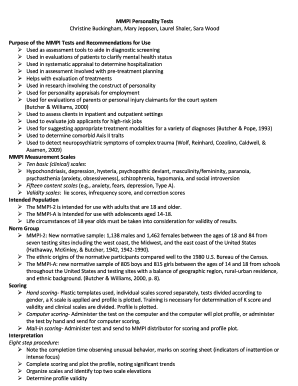


The items that make up the original F scale are all on the first half of the test, and it was observed that some patients are prone to become less invested in accurate responding as they progress through the MMPI's 567 items. Finally, the F(b) scale is the most recent addition and is essentially the F scale for the back half of the test. Too many item pairs endorsed in the true direction is thought to indicate a true response bias, which can also bring the test results into question. The TRIN is composed of item pairs that are not expected to be answered similarly (e.g., “I feel sad most of the time” and “I am generally a happy person”). Too many item pairs with inconsistent answers will raise the suspicion of test invalidity. The VRIN consists of item pairs that are expected to be answered similarly (e.g., “I feel sad most of the time” and “I consider myself to be depressed”). The next three validity scales, VRIN, TRIN, and F(b), were added during the revision. The K corrections were devised rationally and have not been empirically verified. 10 A higher K scale score (more defensiveness) means that the clinical scales are likely to be lower than they should, so the MMPI-2 has a “K-corrected” formula that provides an estimation of what the clinical scales might be if the K scale were within normal limits. Like the L scale, the K scale is purported to measure defensiveness, but data have suggested that persons with a higher level of education tend to score higher on the K scale items than the L scale items.

Therefore, elevation of the F scale is thought of as either a “cry for help” or a more intentional attempt to appear worse off psychologically (i.e., faking bad). The F scale contains items of unusual or severe pathology that are infrequently endorsed by most people. It is commonly thought of as an unsophisticated attempt to appear healthier than one might actually be (i.e., faking good). The L scale was designed to identify respondents who attempt to minimize pathology to the extent that they deny even minor faults to which most individuals will admit. The MMPI-2 validity scales are the Lie (L), Infrequency (F), correction (K), Variable Response Inventory (VRIN), True Response Inventory (TRIN), and F back (F B) scales. The addition of these scales helps sharpen and individualize the clinical interpretation of the MMPI-2 results. Groups of items that have been shown to reliably differentiate two or more samples or populations can be added to the MMPI-2 as a clinical or supplemental scale. This is made possible by the empirical keying method described earlier. An interesting feature of the MMPI-2 is that over 300 “new” or experiential scales have been developed for the test over the years. A T-score of 65 or greater indicates clinically significant psychopathology on the MMPI-2. MMPI raw scores are transformed into standardized T-scores where the mean is 50 and the SD is 10. 9 The MMPI-2 contains 10 clinical scales that assess major categories of psychopathology and six validity scales designed to assess test-taking attitudes. 8 As mentioned earlier, the MMPI was designed to both separate subjects into “normals” and “abnormals,” and to subcategorize the abnormal group into specific classes. The Minnesota Multiphasic Personality Inventory–2 (MMPI-2) is a 567-item true/false, self-report test of psychological function. Stern MD, in Massachusetts General Hospital Comprehensive Clinical Psychiatry, 2016 The Minnesota Multiphasic Personality Inventory–2


 0 kommentar(er)
0 kommentar(er)
